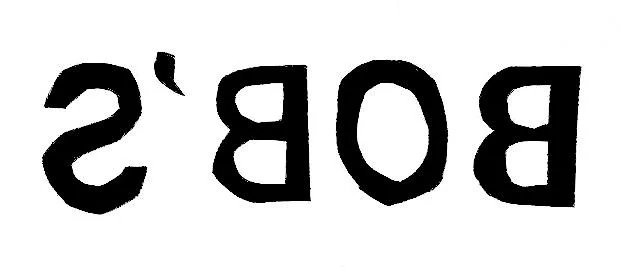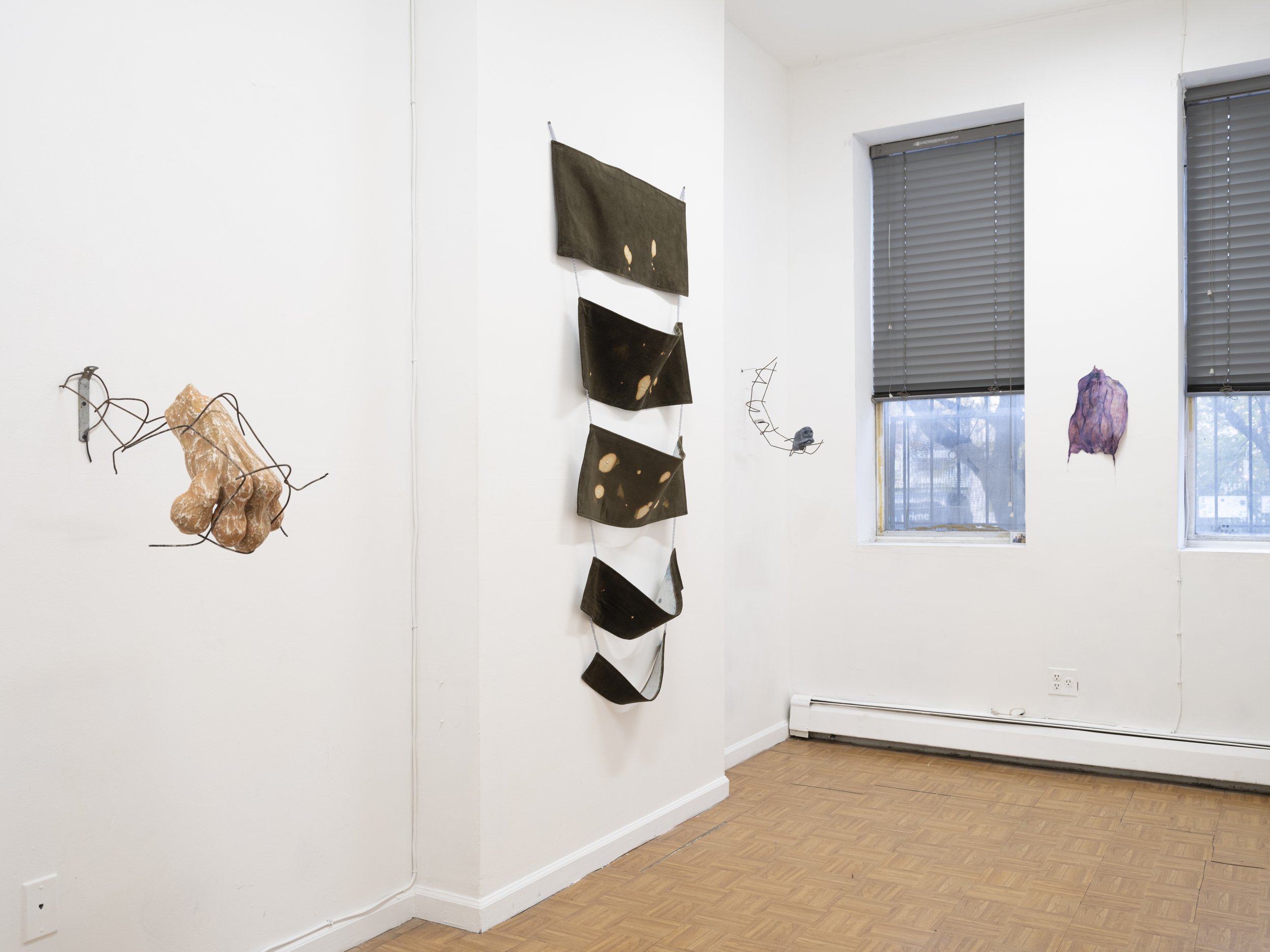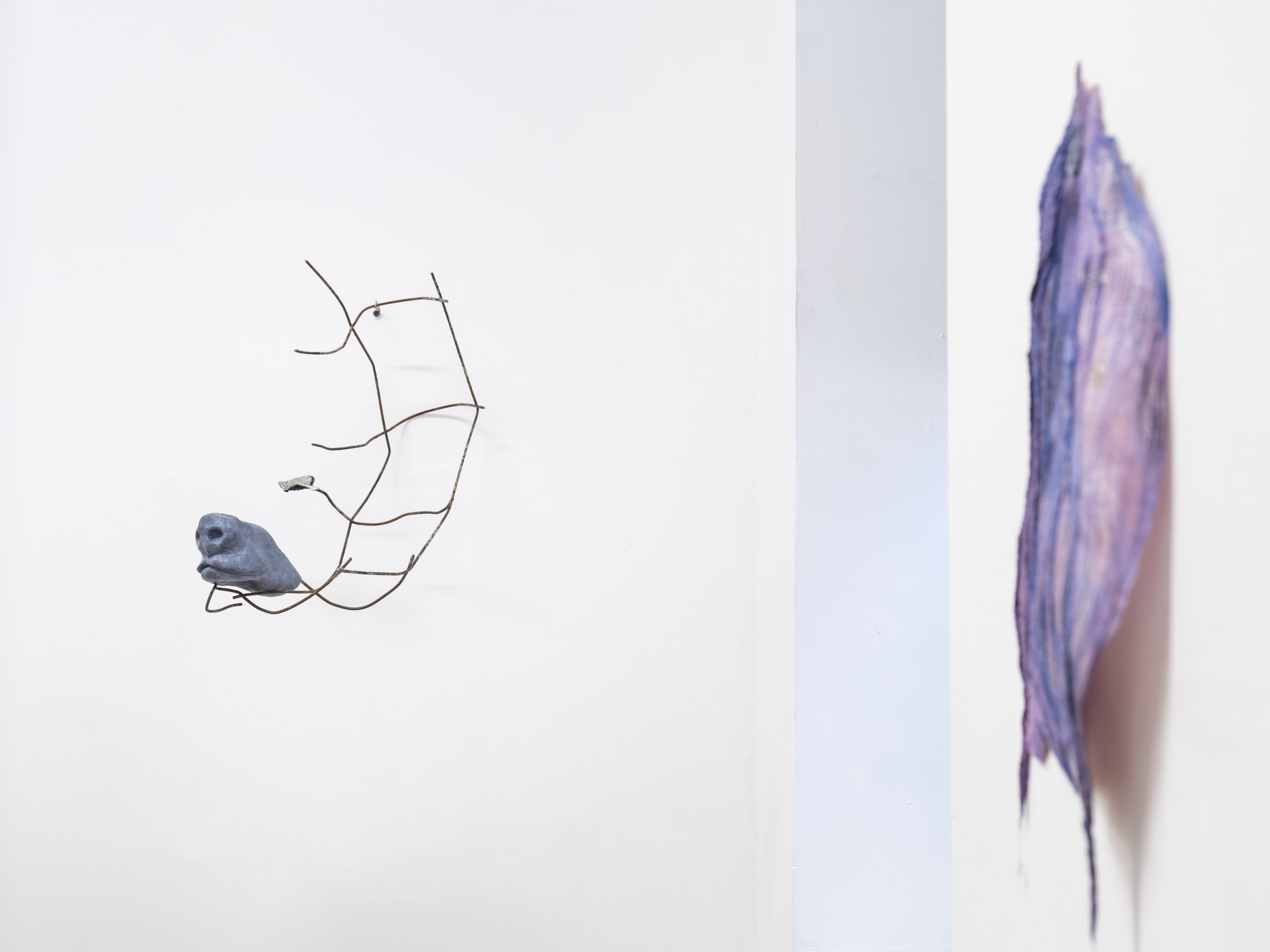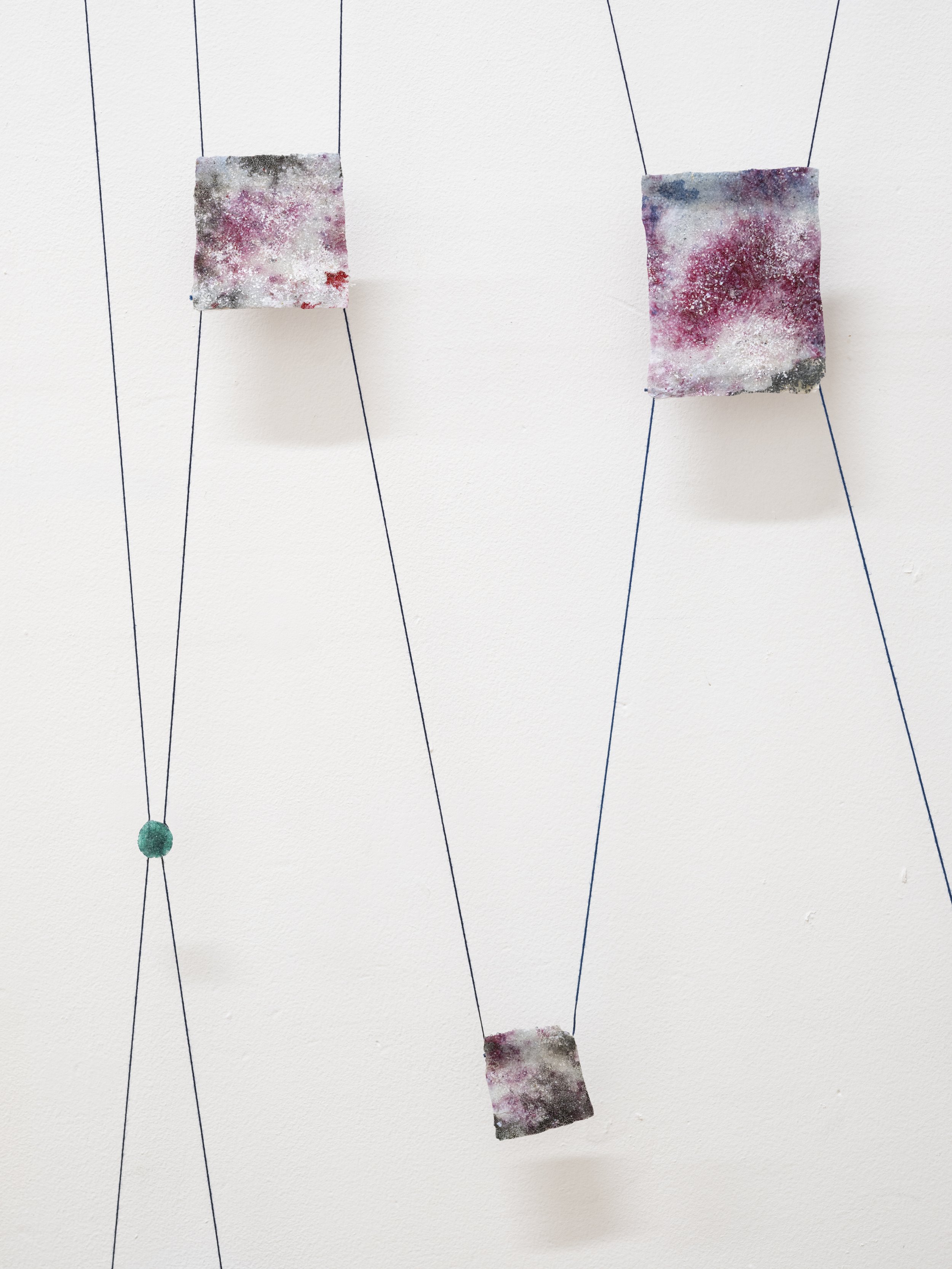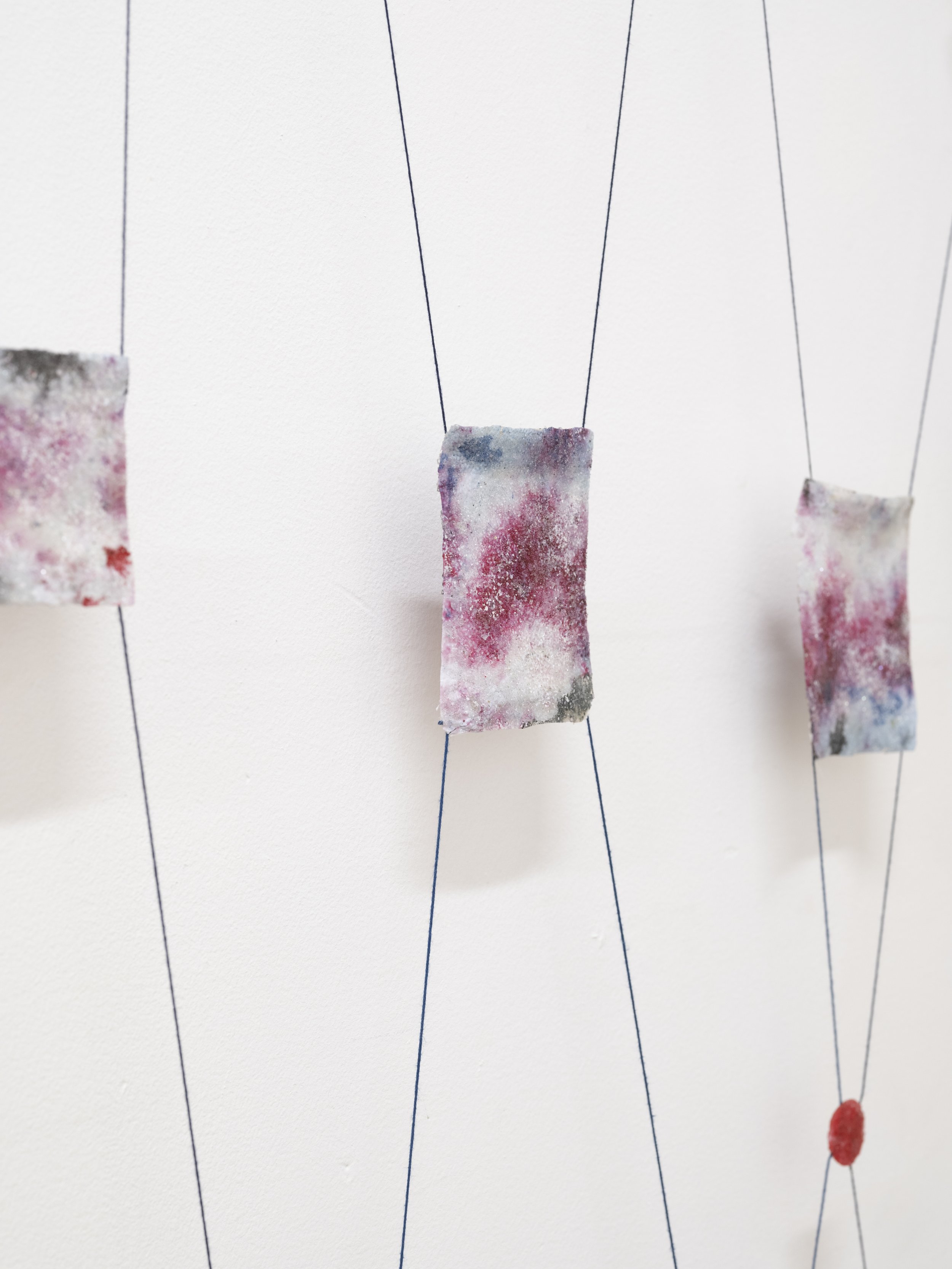IN VERTEBRATE/
/ OUT OF JOINT
Cristina Covucci
Lauren Clark
November 10th - December 10th, 2023
Opening reception Friday, November 10th 6-9pm.
The Latin “vertebra,” referring to the bones of the spine, likely comes from the verb “vertere,” meaning “to turn.” Contained in the word is the idea that the joints of the spine act as hinges, allowing for a certain (limited) range of motion. We vertebrates hold ourselves and others with this angular scaffolding, a complex system of hinges covered in flesh.
The prefix “ver-” likely comes from the Proto-Indo-European root “wer-,” which also denotes a turning, twisting, or bending motion. We find this root in “controversy,” when separate groups turn against one another in disagreement, and in “aversion,” when one turns away from something in disgust. The “introvert” turns inward. The “extrovert” turns out.
In their work, Lauren and Cristina wrestle with the tensions between structure and disorder, pitting stable materials up against more unpredictable ones—the hard and bony up against the loose and fleshy.
For Lauren, the ladder is a recurring image, a device that has allowed humans to reach heights that we wouldn’t be able to with our bodies alone. The ladder is a kind of prosthetic, an external spine. In Flitch, its rungs are formed by horizontal strips of velvet, strung together and stained with bleach and verdigris, an unstable blue-green pigment that comes from oxidized copper. And in Border Loop, the ladder turns in on itself, forming a rectangle that, if climbed, would bring someone not further up, but simply back where they started. This motif appears at the center of a shroud-like form, made of painted and dyed cotton mesh. A basic means of warming or protecting the body, the shroud has historically served as a kind of spiritual substrate, like the famous Shroud of Turin or the tilma of Juan Diego, upon which a miraculous image of the Virgen de Guadalupe is said to have materialized in sixteenth-century Mexico. Other shrouds are made of decorated animal skins, like the Plains Indians’ ceremonial capes, passed down along the matrilineal line and worn by brides on their wedding day.
We might consider the transparent ponchos worn by sports fans in a rainy stadium or the shiny capes wrapped around marathon runners to be inorganic shrouds, made, like much of Lauren’s work, with plastic—a material whose original elements have been so manipulated that it has lost its ability to break down. Lauren’s are shrouds of the chemical world, smeared with the rich colors of the natural world, whose plants and insects continue to compete with the plastics that threaten to replace them.
The social art historian T.J. Clark has written about how humans’ constructed superiority over animal has everything to do with our bipedalism—the fact that many of us walk upright, on two feet, rather than four. The four-legged creature puts its senses to use closer to the ground, its spine in a horizontal state that we have come to associate with sleep, sex, and death. Detached from their original spines, animal-skin cloaks hang limply around the small frame of the human skeleton. As a person walks, their shroud sways and sags. Cristina’s sculptures seem to retrieve these missing spines and put them to new sensorial uses. In Leave It and Paw, metal armatures emerge from the wall—thick, writhing backbones supporting a dog’s fine-tuned snout and meaty paw. These disembodied parts confront us at eye level. In a kind of sensory alchemy, tools accustomed to the ground rise to the privileged zone of the human head, blurring the lines between sight, smell, and touch.
We often create artificial conditions so that nature adapts to our desires. Borders and fences turn land, an organic thing, into property, an invention to which capitalists (and bodies under capitalism) cling. But these boundaries warp over time, either through natural erosion, or through forced movement, revolution, or attack. While Lauren’s Nacre Net is like a chainlink fence gone loose, with gem-like debris caught in its joints, Cristina’s Hedge Right is like an archaeological specimen. Rejected by the ground in which it was planted—pushed out by a tree’s roots—its materials emphasize the different paces at which our world transforms. Iron bows and rusts over the course of several years, but alabaster is formed over centuries, occurring in layers as sea water evaporates. In nature, its appearance is altered by adjacent minerals and water patterns. But in Cristina’s studio, its physical mutation is sped-up, asked to imitate the fleur-de-lys at the tops of fences all over Brooklyn. Another prosthetic—this one replacing the rusted metal of the fence with something sturdier, like how scar tissue is thicker than the unharmed flesh before a wound.
IN VERTEBRATE / OUT OF JOINT brings together two bodies of work before which we are tempted to stretch and slouch, to sniff and scratch. Glossy pearls and abalone shells live alongside urban refuse, like small treasures. Tarnished shrouds hang as if on an invisible clothesline, like diaphanous skins seeking new skeletons. And we vertebrates, made up of spines and skins ourselves, might reexamine what we stand for in a world that denies the soft.
—Angela H. Brown
Cristina Covucci is an artist based in New York. She holds an MFA in Sculpture from Hunter College, and a BFA in Ceramics with a minor in Literature from Rochester Institute of Technology, School for American Crafts. Group exhibitions include Day Marks, Arisohn and Murphy, New York (2021); DOG, Company Gallery, New York (2021); Some Greater Sum, 205 Hudson Street Gallery, New York (2021); No Kid Hungry, ZH Projects, Brooklyn (2020); The Lower East Side Girls Club, Fergus McCaffrey, New York (2020); Act I, and Scene II, 205 Project Space, New York (2018).
Lauren Clark is an artist living and working in New York City. She holds an MFA from Hunter College, a BS/VA from SUNY Purchase School of Art & Design and an Associate of Arts from Bard College at Simon’s Rock. Exhibitions include: Extra Terrestrial, Rachel Uffner Gallery, New York, NY (2022); Tinieblas, 205 Hudson Gallery, New York, NY (2021); Boys in the Sand, New York Board of Taste, New York, NY (2021); Help! I’m a Rock, Conduit Gallery, Ridgewood, NY (2020); and Knock on Wood, Hunter College Galleries, New York, NY (2019). She has been awarded residencies at Jentel, Banner, WY and Byrdcliffe, Woodstock, NY. Publications include: A Slippery Slope of Resemblances, CUNY Academic Works, and October 31, 2020, New York Board of Taste.
